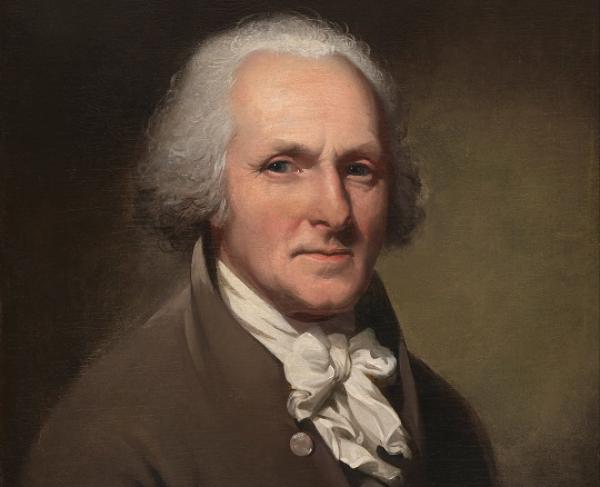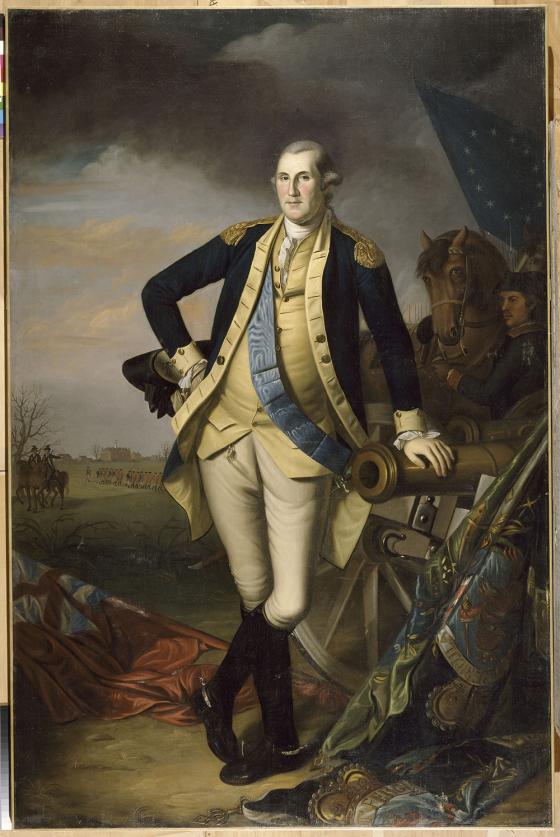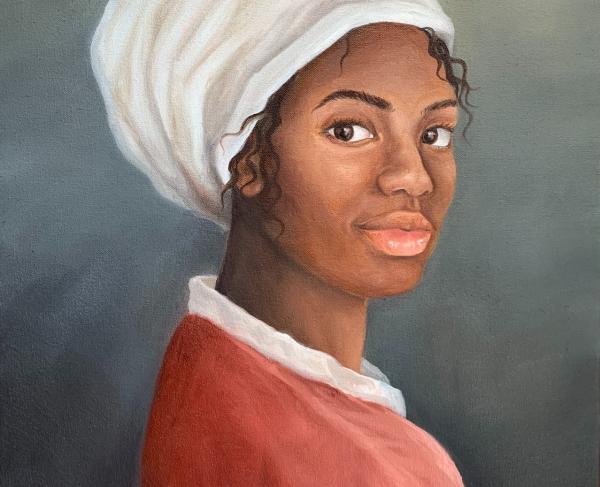Charles Willson Peale

Charles Willson Peale was born on April 15, 1741, in Queen Anne’s County, Maryland. He was the first son of Charles Peale and Margaret Triggs. His father had been a forger and a thief, who barely escaped execution, before being banished from England to America because of his crimes. The elder Peale, despite his crimes, had been a member of the bourgeois class in England and was a graduate of Cambridge. He desperately wanted to retain his status in America. He attempted to become a slaveholder and a member of the landed gentry but was denied appointments that would allow him to accrue the necessary capital. Thus, he was forced to be a schoolteacher for the rest of his life, never achieving his desired success. At death, his estate was valued at only 50 pounds. Charles Willson Peale was on only eight years old at the time of his father’s death. His father’s death threw the younger Peale, his mother, and his four siblings into economic turmoil. The struggling family moved to Annapolis to be supported by his mother.
It was in Annapolis that Peale would get his first experience as an artisan. He worked for Nathan Waters, a prominent Annapolis saddle-maker, from 1754 to 1761. Waters encouraged Peale throughout their time together, and Peale wrote about himself in the third person later that, “The Youth was disposed to be industrious and the master to encourage that industry.” It was at this time that Peale became interested in painting. In 1763 he traded a saddle to study briefly under American portraitist John Hesselius. He continued seeking out mentors within the colonies studying under John Singleton Copley. Eventually, his friends raised enough money for Peale to travel to England to study painting under the tutelage of Benjamin West. He remained in England for three years, afterward returning to America and becoming an established artist.
In 1776, Peale became fascinated with the leaders of the revolution and the revolutionary cause itself, so he moved to the new nation’s capital, Philadelphia. It was during this move that Peale produced his first portraits of notable Americans while also enlisting in the revolutionary cause, joining the city militia. The artist turned soldier fought in the battles of Trenton and Princeton, eventually receiving the rank of captain. By 1779 he was serving in the Pennsylvania State Assembly and had returned to seriously painting.

Peale was one of the most prolific painters of the American Revolution, depicting nearly every notable revolutionary figure, including Benjamin Franklin, John Hancock, Alexander Hamilton, and Thomas Jefferson. He portrayed George Washington nearly sixty time—for which, he is arguably most famous. However, Peale was not just a portrait painter but was also admired for his skill in the “trompe l’oeil” style.
Besides painting, Peale is notable for starting one of the first serious American museums. After organizing the first U.S. scientific expedition in 1801, Peale decided to create what became The Philadelphia Museum. A museum dedicated to the biology of the planet and specifically the biology of the American continent. The museum was the first in America to display mastodon bones, which were known at that time as “Mammoth bones.” Peale worked on mounting the bones in three-dimensional space, increasing the realism and influencing how all ancient bones were to be displayed from then on. The museum also adopted Linnaean taxonomy, which brought the museum scientific respect locally and abroad, as the exhibits were meant to be scientific rather than fantastical. The museum brought European attention to the conditions of the American continent, but also the new country’s academic prowess.
Peale fathered a large family; he married three times and had sixteen children across his first two marriages. Peale named all his children, male and female, for his favorite artists. He trained all his children in painting, three of his sons became famous artists, Rembrandt Peale, Raphaelle Peale, and Titian Peale. These three men all took different paths in the art world. Rembrandt, like his father, was notable mostly for his realistic portraits of the founding fathers. Raphaelle is regarded as the first still-life painter in American history. Titian focused accurately on scientific illustrations, combining his father’s passions for art and science.
Charles Willson Peale is an essential figure of the early American period. He was a genuinely American story—rising from nothing to achieve great fame and importance. He also embodies the enlightenment spirit of the Renaissance man, as an artist, scientist, and even inventor. Peale is often remembered most for his paintings, but his impact on American culture is much more profound than portraits.

